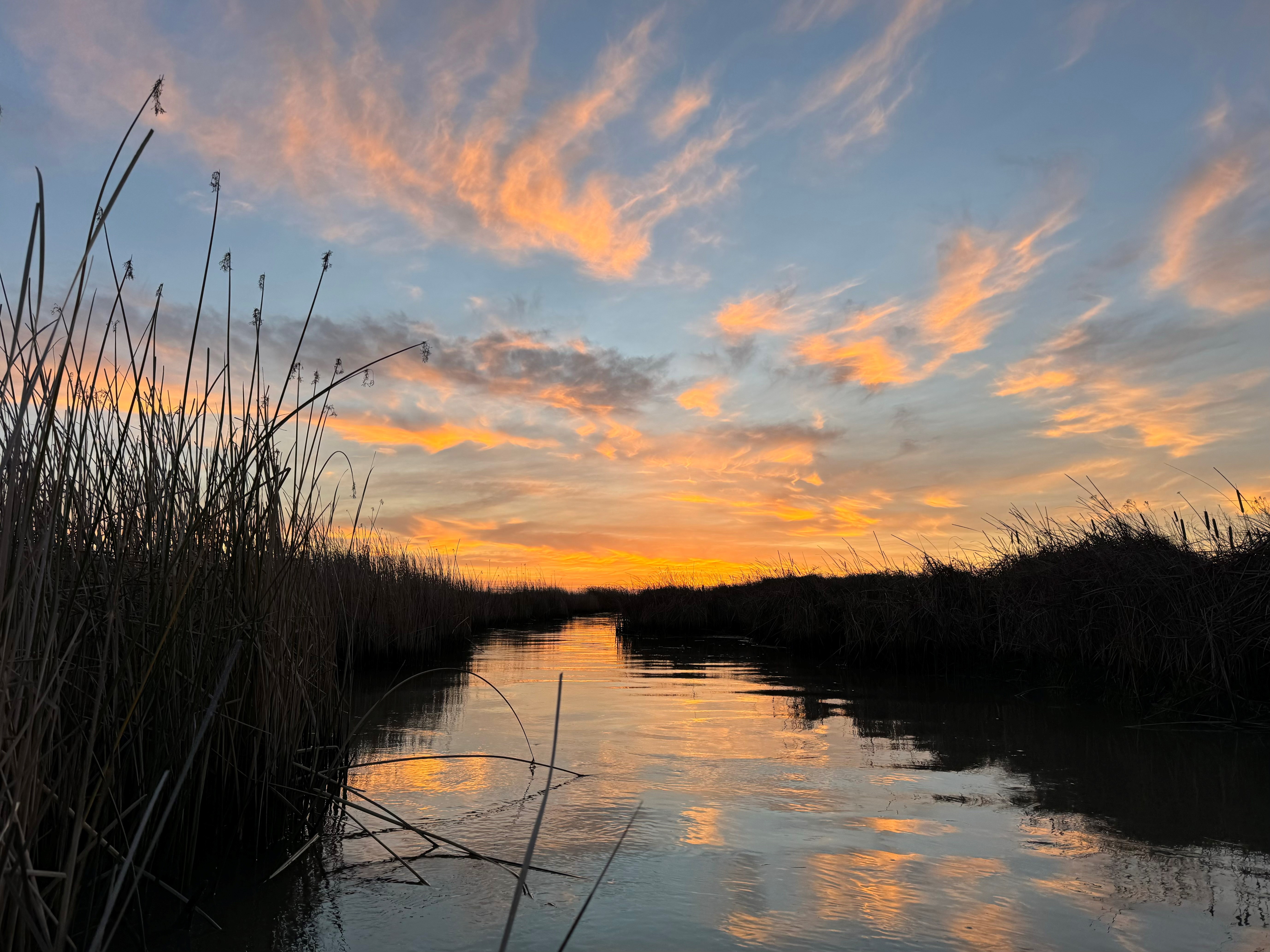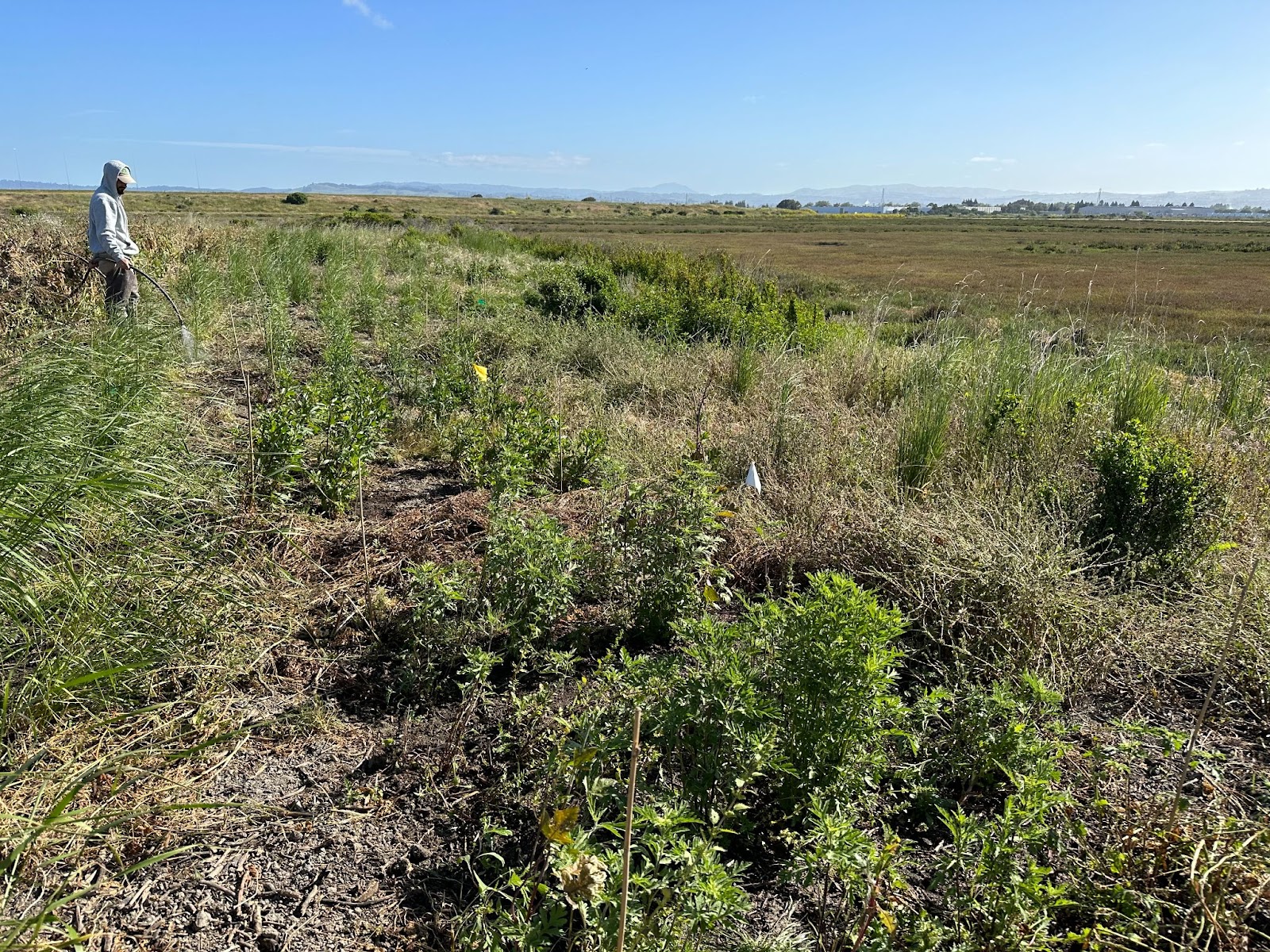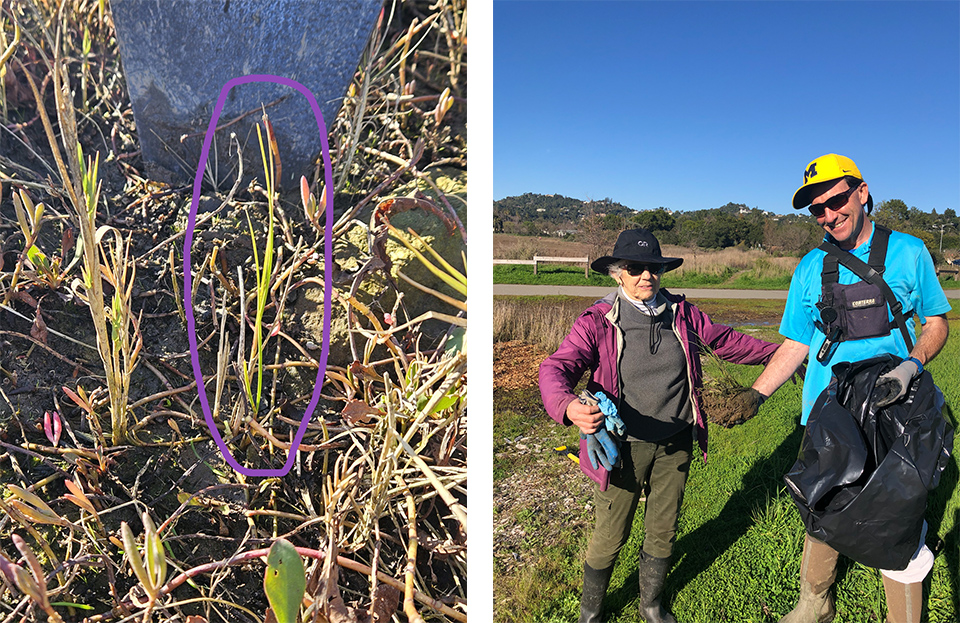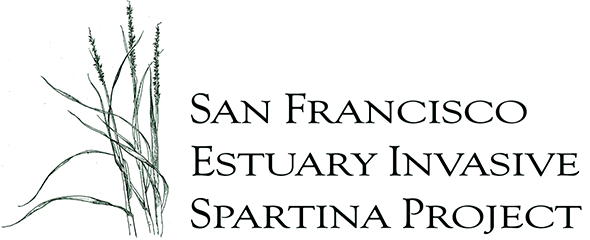
A Key Step in Climate Adaptation:
Invasive Spartina treatment may not be considered the most sexy restoration activity, but it is a critical action to enable the San Francisco Bay to adapt to sea level rise. Surrounded by residential and industrial development, agriculture, and infrastructure, the San Francisco Bay is the most urbanized estuary west of the Mississippi River. The Estuary faces many stressors that threaten the integrity of its biodiversity, and without active intervention the Bay’s shoreline could potentially become an unvegetated, continuous rock levee as we adapt to sea level rise. Added to this threat, invasive Spartina clogs slough channels, eliminates mudflats, alters hydrology, and reduces biodiversity. Left unchecked, the combination of this invasion with climate changes would pose an insurmountable threat to the continued existence of diverse and healthy intertidal marsh and mudflat habitats.
Thankfully, plans to restore healthy native tidal marshes are integrated into Baywide plans for nature-based adaptation to sea level rise. Partners on the Invasive Spartina Project are pioneering and linking innovative techniques to treat invasive Spartina, propagate and install native plants, and provide high tide refugia in strategic locations as a regional climate change adaptation approach. Project leaders are widely sharing techniques and methods with other landowning partners to incorporate as key components into their large-scale, current and future, restoration projects and climate adaptation actions. Addressing invasive plants and enhancing native habitat with diverse elevational and vegetative elements is more cost-effective, results in faster native habitat establishment, and provides more resilient habitat that can accrete sediment and adapt to sea level rise. Please view the recent presentation by Restoration Manager Jeanne Hammond at the State of the Estuary Conference session on Regionally Advancing Living Shorelines for more info on this important adaptation work.

New Website:
The project team is excited to announce the launch of the new Invasive Spartina Project website. Visitors to the site can find the most up-to-date reports, treatment schedules (during treatment season), and an archive of project updates and photos.
Here are some project highlights from December 2023 through June 2024, as the 2024 Spartina treatment season ramps up.
Ridgway’s Rail Monitoring:
Biologists have completed surveys at 61 transects spanning 99 sites and detected more than 500 unique Ridgway’s rails. At North Creek Marsh in the Eden Landing Ecological Reserve (Alameda County), biologists detected 22 individual rails, a rapid rise since 2019 when they were first detected here. This is excellent news, as partners and collaborators on the Invasive Spartina Project have worked hard to restore this site with native cordgrass plantings specifically to support rails and native wildlife.
This year, Ridgway’s rail surveys were completed on April 18, a few days later than usual, due to frequent rainy weather. As the survey season progresses, rails usually spend more time sitting on nests and less time calling to defend their territory; thus, fewer birds are detected in April than earlier in the season. During the final survey of the season at Mowry Marsh near Don Edwards National Wildlife Refuge, biologists detected 27 individual rails, many of which were single males responding with a “kek” to the survey broadcast. These birds may have already mated, and were out scouting for potential second mating opportunities while the females sat on the nests.

Restoration:
The restoration team completed another busy planting season, focusing on enhancing habitat for California Ridgway’s rails and other tidal marsh wildlife. At 12 sites, mostly in the East Bay, project partners planted species that provide year-round habitat cover at all tidal elevations, including native Pacific cordgrass (Spartina foliosa) in the low marsh, marsh gumplant (Grindelia stricta) in the mid- to high-marsh, and/or wetland-upland transition zone species above the high tide line.
Rainy weather over this past winter encouraged plant growth, both for planted natives and for weeds. Teams were kept busy weeding around the transition zone plantings to reduce competition. To promote plant establishment, crews also watered plantings in the transition zone through the end of May, which wrapped up the team’s 13th year of restoration work.

Monitoring and Treatment:
In June, the monitoring teams conducted their summer round of surveys for Spartina densiflora (Chilean cordgrass, or “densi”). This species of invasive Spartina was introduced to Marin County in the early 1970s and spread to many locations around the North Bay and beyond, with the heaviest infestations along Corte Madera Creek. After 20 years of hard work by project partners and staff — including literally thousands of hours of volunteer time from Sandy Guldman of Friends of Corte Madera Creek Watershed — full eradication of this invasive marsh plant from the San Francisco Estuary is on the horizon!
The results of the June 2024 surveys are very exciting: biologists detected just two tiny seedlings of densi throughout the entire Estuary. For the first time in the history of the project, no densi was found at the original introduction site at Creekside Park/Hal Brown Park in Greenbrae. At this late stage in the eradication efforts, the project’s Integrated Pest Management strategy calls for any detections to be carefully removed by hand digging and to dispose of plants off-site.
Meanwhile, monitoring and treatment is underway for other invasive Spartina hybrid species. This year, the monitoring and treatment teams are tracking plants using a new app, Field Maps by ESRI, on Android tablets. As the teams continue to refine the tool, we hope to share lessons learned with restoration colleagues.
Outreach:
Program managers participated in the State of the San Francisco Estuary Conference, held on May 28-29, 2024 at the Oakland Scottish Rite Center. In addition to the session talk mentioned above, Monitoring Program Manager Tobias Rohmer presented a poster titled, “San Francisco Estuary Invasive Spartina Project: Progress Update and Beginning Phased Treatment at the Final Sites.”
Thank you!
Thanks to the wide range of collaborating organizations that make this work possible including: State Coastal Conservancy, US Fish and Wildlife Service, East Bay Regional Park District, California Dept. of Fish and Wildlife, Port of Oakland, SF Bay Joint Venture, California Invasive Plant Council (Cal-IPC), Olofson Environmental, Inc., San Francisco Bay Restoration Authority, Valley Water, and more than 150 project landowners, partners, and contractors. Together, we are working together to protect the Bay’s shorelines.
If you are working at sites along creek mouths, shorelines, or any waterways that connect to the Bay, please get in touch with our team at info@spartina.org.
